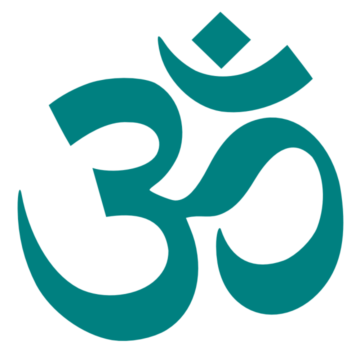
In the Yoga of sound (Nada Yoga), there are a number of tones that, according to yoga tradition, specifically activate the various energy centers in the body, stimulate the brain and “resonate and harmonize with the innate vibrations of the universe.” (Dharma Singh Khalsa, MD, Meditation as Medicine: Activate the Power of Your Natural Healing Force (NewYork: Pocket Books, 2001), p. 111.)
Certainly research bears this out. In Italy, scientists discovered that mantra repetition in the ancient languages of Sanskrit (Om Mane Padme Om) and rosary repetition in Latin benefit the heart, and both prayer and mantra slow the breath rate, stimulating the parasympathetic nervous system, which can calm the hyper-vigilance we see in high states of anxiety and PTSD. Interesting to note that the Rosary prayed in the vernacular, which in this case was Italian, considered to be a mellifluous language, did not have the same calming effect as the same prayer in Latin or the chant in Sanskrit. “When your internal metronome slows, you get a variety of benefits,” says Mehmet C. Oz, M.D., director of the Heart Institute at Columbia University, and well-known television personality. “You also lessen the risk of catastrophic events like heart attacks and strokes.” Everything from Parkinson’s disease to various nervous system disorders, sleep disorders, neurological injury, learning disabilities and psychological disorders has been treated through the therapeutic use of sound. In my own work with students and clients, I have used mantra to interrupt panic attacks, soothe children on the autistic spectrum and work with balancing both depression and anxiety. The LifeForce Yoga Chakra Clearing Meditations are in use as a protocol in mental health treatment in health care settings worldwide.
A recent study by the National Institute of Mental Health and Neuroscience in India, compared the chanting of the mantra “Om” with the sound “Ssss” and with resting in silence. Only the mantra “Om” deactivated the limbic brain (fight or flight) by stimulating the vagal nerve. Again, this turns on the parasympathetic nervous system, which calms and sooths the body-mind. To read the full study click here.
Scientists have also found that a Kundalini meditation called Kirtan Kriya that involves mantra tones and hand gestures called mudras, is beneficial for both mood and memory.To read the full study click here.
In LifeForce Yoga, we practice universal (non-devotional) mantras in postures and in seated meditation. Studies have indicated that this protocol is effective for treating mood disorders, including anxiety and depression. To read the full study click here.
You can practice two different mantra-based meditations with the LifeForce Yoga Chakra Clearing Meditation for Mood Management, either as a CD or download. To listen to a sample, click here.
If you are a researcher interested in exploring the use of this protocol in your study, we can provide support. Please visit our page for researchers.